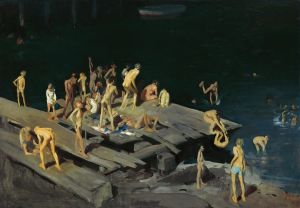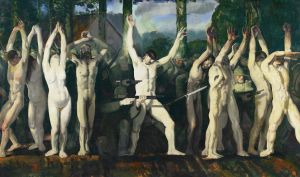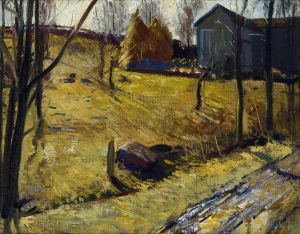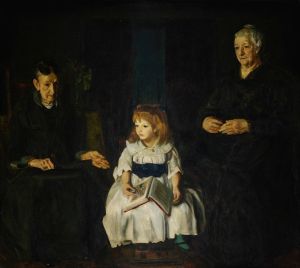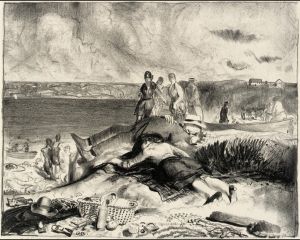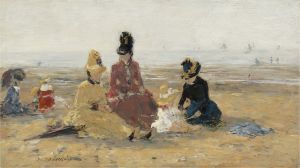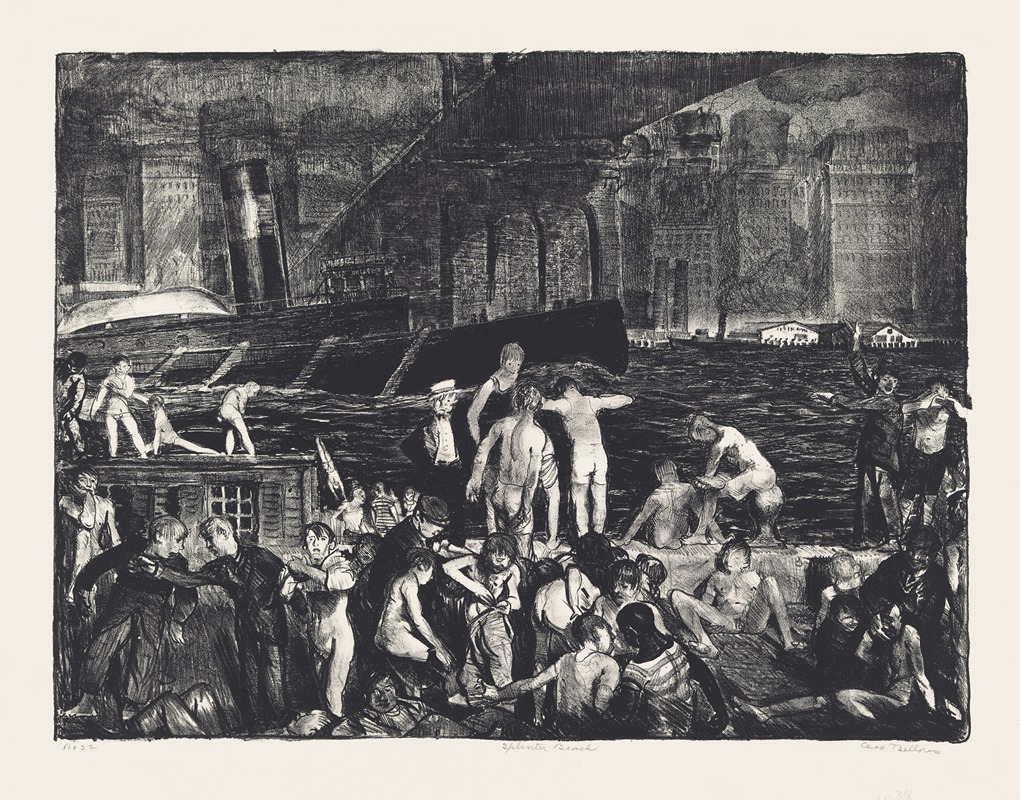
Splinter Beach
A hand-painted replica of George Wesley Bellows’s masterpiece Splinter Beach, meticulously crafted by professional artists to capture the true essence of the original. Each piece is created with museum-quality canvas and rare mineral pigments, carefully painted by experienced artists with delicate brushstrokes and rich, layered colors to perfectly recreate the texture of the original artwork. Unlike machine-printed reproductions, this hand-painted version brings the painting to life, infused with the artist’s emotions and skill in every stroke. Whether for personal collection or home decoration, it instantly elevates the artistic atmosphere of any space.
"Splinter Beach" is a painting by the American artist George Wesley Bellows, created in 1916. Bellows, known for his vigorous and dynamic style, was a prominent figure in the Ashcan School, a movement that focused on portraying scenes of everyday urban life in early 20th-century America.
The painting depicts a lively scene at a beach, capturing the essence of leisure and recreation during the summer. Bellows' choice of subject reflects his interest in the social dynamics and the diverse activities of people in public spaces. The title "Splinter Beach" suggests a location that might not be a pristine, sandy shore but rather a more rugged, possibly urban waterfront area, resonating with the Ashcan School's focus on realism and the less glamorous aspects of city life.
In "Splinter Beach," Bellows employs his characteristic bold brushwork and vibrant color palette to bring the scene to life. The composition is dynamic, with figures in various poses and activities, suggesting movement and the bustling energy of the beachgoers. The use of light and shadow in the painting enhances the sense of a bright, sunlit day, contributing to the overall lively atmosphere.
Bellows' ability to capture the human form in motion is evident in this work. The figures are rendered with a sense of immediacy and spontaneity, which adds to the realism and vitality of the scene. His attention to detail in depicting the different postures and interactions of the beachgoers provides a snapshot of early 20th-century American leisure culture.
"Splinter Beach" is part of Bellows' broader body of work that often explored themes of urban life and the human condition. His paintings frequently depicted scenes of New York City, including its tenements, docks, and recreational areas. This particular painting fits within that context, offering a glimpse into the recreational habits of city dwellers during that period.
George Wesley Bellows (1882-1925) was a significant figure in American art, and his works are held in high regard for their contribution to the realist tradition. His paintings are celebrated for their dynamic compositions, robust brushwork, and the ability to convey the spirit of the times. "Splinter Beach" exemplifies these qualities and remains an important piece within his oeuvre.
Today, "Splinter Beach" is part of the collection at the Columbus Museum of Art in Columbus, Ohio. The museum holds an extensive collection of Bellows' works, as he was born and raised in Columbus. The painting continues to be appreciated for its artistic merit and its depiction of a slice of American life from over a century ago.
In summary, "Splinter Beach" by George Wesley Bellows is a vibrant and dynamic portrayal of a beach scene, reflecting the artist's interest in urban life and the human condition. Created in 1916, the painting captures the energy and diversity of early 20th-century American leisure activities, rendered with Bellows' distinctive bold brushwork and keen observation of human interaction.





